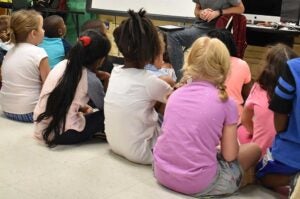InTucker Magazine
July 2020
School Choice
DeKalb Education Brass Face Big Decision on School Protocol

One of the biggest unanswered questions from the coronavirus pandemic is what we will do with our nation’s children when the new school year begins. Some parents and educators are concerned about sending students into environments where social distancing can be extremely challenging. From the cafeteria to crowded classrooms, school buildings were not constructed with the idea of keeping their occupants six feet apart.
On the other hand, there is also a group of parents that is less than thrilled at the prospect of having students stay home to start the new school year. They helped their kids complete two months of virtual learning in the spring and saw first-hand how different it is from the traditional classroom learning experience.
Many districts around the country have some extra time, as their students don’t report back until after Labor Day. But here in DeKalb County, the first day of school is scheduled for August 3. That means the DeKalb County School District is on the clock and will have to be one of the leaders both locally and nationally when they make the decision on what to do about school.
Fortunately, the decision is not being made in a vacuum. Last month, district leaders posted a survey for stakeholders to complete. It offered a range of options for the coming school year, asking questions on everything from full-time school attendance to full-time virtual learning, as well as a hybrid of the two. Leadership will announce their plans, educated by those survey results later this month.
So, what could the school year look like? You know what full-time school and full-time virtual learning would entail. According to the survey, “DeKalb County School District is currently planning our return for the 2020-2021 school year based on three different options…A hybrid model may be necessary due to space constraints at schools and social distancing requirements.”
The hybrid would either see students in class for alternating days or alternating weeks. Under the first scenario, half the students would go to school on Tuesdays and Thursdays, while the other half would go on Wednesdays and Fridays. The second scenario would put students in class for one four-day week, followed by a four-day week of in-home virtual learning. In each scenario, faculty would get one teacher workday per week.
Ultimately, the decision will rest with the new school superintendent. Whatever is decided, it will be an unprecedented choice in an unprecedented time. And one way or another, Tucker’s student body will be ready for a new school year.

